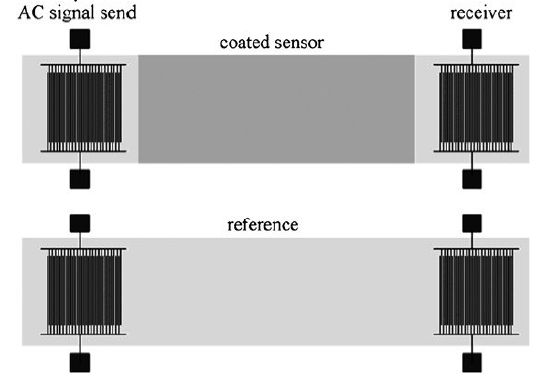
Piezoelectric Biosensors
 المؤلف:
John M Walker and Ralph Rapley
المؤلف:
John M Walker and Ralph Rapley
 المصدر:
Molecular Biology and Biotechnology 5th Edition
المصدر:
Molecular Biology and Biotechnology 5th Edition
 الجزء والصفحة:
الجزء والصفحة:
 21-1-2021
21-1-2021
 2096
2096
Piezoelectric Biosensors
The piezoelectric effect is due to some crystals containing positive and negative charges that separate when the crystal is subjected to a stress, causing the establishment of an electric field. As a consequence, if this crystal is subjected to an electric field it will deform. An oscillating electric field of a resonant frequency will cause the crystal to vibrate with a characteristic frequency dependent on its composition and thickness and also the way in which it has been cut. As this resonant frequency varies when molecules adsorb on the crystal surface, a piezoelectric crystal may form the basis of a biosensor. Even small changes in resonant frequencies are easy to determine with precision and accuracy using straightforward electronics. Differences in mass, even as small as 1 ng cm–2, can be measured when adsorbed on the sensing surface. Changes in frequency are generally determined relative to a similarly treated reference crystal but without the active biological material. As an example, a biosensor for cocaine in the gas phase may be made by attaching cocaine antibodies to the surface of a piezoelectric crystal.
This biosensor changes frequency by about 50 Hz for a 1 ppb atmospheric cocaine sample and can be reused after flushing for a few seconds with clean air. The relative humidity of the air is important, because if it is too low the response is less sensitive and if it is too high the piezoelectric effect may disappear altogether. Cocaine in solution can be determined after drying such biosensors.
Enzymes with gaseous substrates or inhibitors can also be attached to such crystals, as has been proved by the production of biosensors for formaldehyde incorporating formaldehyde dehydrogenase and for organophosphorus insecticides incorporating acetylcholinesterase.
One of the drawbacks preventing the more widespread use of piezoelectric biosensors is the difficulty in using them to determine analytes in solution. The frequency of a piezoelectric crystal depends on the liquid’s viscosity, density and specific conductivity. Under unfavourable conditions, the crystal may cease to oscillate completely. There is also a marked effect of temperature due to its effect on viscosity. The binding of material to the crystal surface may be masked by other intermolecular effects at the surface and bulk viscosity changes consequent upon even small concentration differences. There is also the strong possibility of interference due to non-specific binding.
Antibody–antigen binding can be determined by measuring the frequency changes in air after drying the crystal. Such procedures, although sensitive, are difficult to reproduce repetitively, as the antibody layer may be partially lost when the antigen is removed. However, oneshot biosensors have been developed, using this principle, for the detection of several food contaminants such as enterobacteria. Piezoelectricity is also utilised in surface acoustic wave (SAW) devices where a set of interdigitated electrodes is microfabricated at each end of a rectangular quartz plate (Figure .). Binding of molecules to the surface affects the propagating wave, generated at one end, such that its frequency is reduced before reception at the other. The sensitivity of these devices is proportional to their frequency and dependent on minimising the interference from non-specific binding.

Figure . A surface acoustic wave (SAW) biosensor.
 الاكثر قراءة في مواضيع عامة في التقانة الإحيائية
الاكثر قراءة في مواضيع عامة في التقانة الإحيائية
 اخر الاخبار
اخر الاخبار
اخبار العتبة العباسية المقدسة


